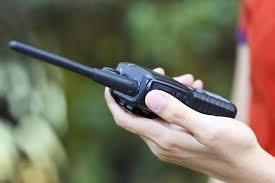In isolated areas where mobile phone networks are weak or nonexistent, it can be a huge hassle to maintain consistent and clear communication. If you’re hiking through a national park, working on a construction site that’s a long way from the city, or managing a farm that’s nearly a digital desert, staying in touch with your team or companions is vital for both safety and efficiency.
Two-way radios, also known as a walkie-talkie, offer a dependable solution. These devices work without the need for cell networks, which makes them a suitable means of communication in off-the-grid locations. They are built to be rugged and user-friendly; if you can push a button and talk, you can operate a 2-way radio. Read on to learn more about how these remote-friendly comm devices work.
No Cell Signal Needed
Possibly the most important advantage of two-way radios is that they work without cellular towers or internet connections of any kind. In places where phones can’t get a signal, walkies can still let people stay in touch. That makes them a good choice for people working in remote conditions, whether those are desert, mountain, maritime, or other kinds of isolated, outdoor environments.
Instant, Real-Time Communication
Speed and simplicity are what walkie-talkies are all about. These devices, with their push-to-talk (PTT) system, allow for instant communication. No dialing a phone number, no waiting for the other end to connect. Just say what you need to say and move on. When teams are dispersed and visibility is limited in isolated areas, rapid voice communications are vital for everything from assigning tasks to relaying safety check-in messages.
Long Battery Life and Portability
Extended use is the prime directive in the design of a walkie-talkie. They are built with an extended battery life in mind. Many models allow the user to spend 12 to 24 hours using the device while getting an extremely reliable performance before needing to charge it. Some models even utilize standard AA batteries, which are very easy to carry and replace.
In situations where the power source is limited, this kind of longevity is a major advantage. The minimal weight and compact design of walkie-talkies make them easy to carry, attach to clothing, or mount on equipment. Climbing mountains and getting around on the job site, you don’t want anything pulling you down or holding you back.
Group Communication and Wide Coverage
In numerous secluded environments, various forms of communication must take place between teams and groups. Unlike using a mobile phone, which typically allows for only one-to-one communication, using a 2-way radio allows for group broadcasts, so that one message can be heard by several different people all at the same time.
This serves to reduce the kinds of miscommunications that can happen when multiple people are trying to talk to one another at the same time.
A Walkie-Talkie Can Be a Lifeline in Isolated and Remote Areas
Two-way radios are reliable communication devices in areas that don’t have a lot of modern infrastructure. With instant connectivity, long battery lives, and no need for cellular service, they are a simple, efficient, and effective solution for maintaining a safe line of communication in remote locations.

